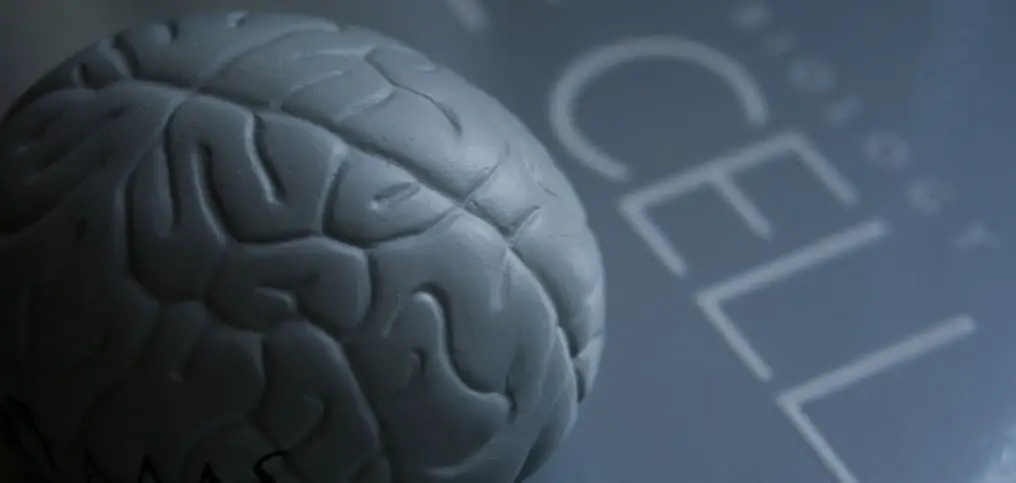Home
-
Google vs DeathOne of our esteemed editors David Bunnell posted this on [Read more...]
-
New findings in neuroscience give hope to brain injured patientsA recent study at the University of Western in Ontario, [Read more...]
-
Grow a replacement human heart using pigs and stem cellsThey say bacon is not good for the heart. In [Read more...]
-
Why men who marry young wives live longerIf you are a man and you want to live [Read more...]
-
A cure for blind mice and possibly humansThe childhood song Three Blind Mice, which recounts the tale [Read more...]
-
Nasal spray makes snake bites survivableA new nasal spray may give snake bite victims at [Read more...]
-
The 5 best places to live to increase your life expectancyIf you are planning on living forever you may want [Read more...]
-
Heart replacement device from TexasTwo doctors have invented a heart replacement device that is [Read more...]
-
Bacon is good for your waistline (and won't kill you)If you think eating bacon will kill you, think again. [Read more...]
-
Cancer breakthroughs: Here come drugs that block tumorsCancer breakthroughs in June have stunned the medical world and [Read more...]
-
Scientists discover protein linked to memory loss and autismResearchers may have a new tool in the fight to [Read more...]
-
A grande-sized reason to drink coffee: Live longer!An epidemiological study of more than 400,000 aging Americans showed [Read more...]
-
Why men live longer in marriage and how their wives can tooKay Svela, who writes the homemaking blog Little Miss Wife, [Read more...]
-
Can cannabis cure cancer? Evidence shows it might help the fightHave a can of cannabis and cure your cancer. Sounds [Read more...]
-
This Baby Will Live to be 120: National Geographic Jumps on Longevity Bandwagon"Our genes harbor many secrets to a long and [Read more...]
-
Antibiotics treatments in mice leads to breakthroughs in extending lifeResearchers in Switzerland have discovered the impact of a longevity [Read more...]
-
Scientists discover salamander secrets to regrowing limbs and organsThanks to startling new research on immune cells in salamanders, [Read more...]
-
Improve Your Memory by Listening to White Noise While You SleepIf you’re not willing to send electrical shocks through your brain – [Read more...]
-
Little Miss Wife: Wine is good for your health and soulWe were quite taken by this piece by the blogger [Read more...]
-
Lab-grown kidneys may soon be a reality for humansResearchers have succeeded in building a functioning kidney built from [Read more...]
-
Hugh Hefner's Midwestern longevity dietAt 86, Hugh Hefner has a staff of chefs available [Read more...]
-
Red meat chemical makes steak and bacon hazardous to your healthA chemical found in red meat helps explain why eating [Read more...]
-
7 longevity assumptions that are wrongScientists who tracked 1,500 people over eight decades have discovered [Read more...]
-
Boiled Greek coffee may hold secrets of longevityLong life and good health may be linked to a [Read more...]
-
Chuck Lorre's plan to live foreverWe here at DeathisObsolete.com applaud Chuck Lorre, writer/creator/producer of the [Read more...]
-
Americans die younger because they don't do these five thingsDespite the United States' state-of-the-art medical care, Americans do not [Read more...]
-
Salty junk food linked to autoimmune diseasesSo it's almost official. Junk food - aka McDonald's, Burger [Read more...]
-
Infographic: Longevity secrets of the OkinawansWant to live a very long long time? Do what [Read more...]
-
Berkeley study may lead to 'molecular fountain of youth'When blood-generating stem cells lose their potency as humans age, [Read more...]
-
Researchers claim anti-aging gene worksTwo papers published in international journals by Indian researchers from [Read more...]
-
Lack of Biotechnology Only Limit on Human LongevityAre there limits on human longevity? Sure. Few people will [Read more...]
-
Shorter men live two years longer than taller men: StudyShorter people live longer than tall people: findings from 12 [Read more...]
-
Eat your flavonoid-rich berries, save your mindScienceDaily (Apr. 26, 2012) — Blueberries and strawberries, which are high [Read more...]
-
Play games, eat right and don't lose your headby Cheryl Poirer I was having lunch with a friend [Read more...]
-
Targeted Ultrasound Promising Treatment for Prostate CancerA new technique to treat early prostate cancer may have [Read more...]
-
World's oldest supermodel shares her secrets83 year old supermodel Daphne Selfe At 83, Daphne Selfe [Read more...]
-
Eating sugar makes you look older, says studyby Cheryl Poirier Unilever, as a company, is good for [Read more...]
-
More evidence that calorie restriction extends lifeEating less doesn't only help you stay trim, it also [Read more...]
-
Recipient of 23rd face transplant doing wellA 37-year-old Virginia man, who was severely disfigured in a [Read more...]
-
Stanford Researchers Made Big Advancement Against Cancer"We have made what we think is a big advancement [Read more...]
-
Popcorn packed with antioxidantsPopcorn, already known to be a good source of fiber, [Read more...]
-
According to this “Life Expectancy Calculator” I’m going to live to be 102by Cheryl Poirier Dr. Thomas Perls has developed a Life [Read more...]
-
Men are disposable, that’s why women live longerby Cheryl Poirier Of course, it’s a little more complicated [Read more...]
-
Aspirin Significantly Reduces Risk of CancerRegular aspirin use significantly reduced risk of cancer, metastasis and [Read more...]
-
Older Americans keep on workingRon Akana, age 83, has worked as a flight attendant [Read more...]
-
Happy 87th birthday Roy Haynes: great jazz drummerRoy Haynes turns 87 today he's still performing with his [Read more...]
-
Dropping acid (LSD) helps alcoholics stop drinkingOne dose of the hallucinogenic drug LSD could help alcoholics [Read more...]
-
90-year-old represents Mac Cosmetics line of beauty productsMac Cosmetics is collaborating with 90-year-old style icon Iris Apfel [Read more...]
-
Vasper: A revolution in exercise technology or just another form of interval training?by David Bunnell This past week my colleague Shirley Gines [Read more...]
-
Vasper to revolutionize exercise technology?by David Bunnell This past week my colleague Shirley Ginnis [Read more...]
-
Drunk surgeons admit to making serious medical mistakesAccording to a new survey, more than 15% of American [Read more...]
-
Colonoscopy saves livesColon cancer is the third leading cause of cancer death [Read more...]
-
Plastic surgery really does make you "look" youngerPeople who had facial plastic surgery were estimated to be [Read more...]
-
Nano-scale robots kill cancer cellsA study from Harvard University announced they have developed a [Read more...]
-
FDA finds unsafe levels of lead in all lipsticks testedFrom the Campaign for Safe Cosmetics Lead in lipstick? Turns [Read more...]
-
Lack of sleep can lead to Alzheimer'sThe poorer your sleep, the more likely you may be [Read more...]
-
Big meals linked to memory lossA link between memory loss and a high calorie diet [Read more...]
-
Cure to Alzheimer's could be on the horizonDestructive plaques found in the brains of Alzheimer's patients have [Read more...]
-
Visual Guide to Heart DiseaseClick here to see WebMD's Visual Guide to Heart Disease. [Read more...]
-
Bread & rolls number one source of sodium in the American dietBread and rolls are the No. 1 source of sodium [Read more...]
-
Wreath-laying ceremony today for last known World War 1 veteranKansas City, Mo. — The National World War I Museum [Read more...]
-
Smoking in men speeds up mental declineMen who smoke tend to have a more rapid mental [Read more...]
-
83-year-old woman receives a jaw implant manufactured with a 3D printerAn 83-year-old woman suffering from a lower jaw infection became [Read more...]
-
Healthy brain aging & cognitive function promoted by exerciseThe benefits of exercise are attributed to several mechanisms, many [Read more...]
-
Brain Oddities: Reading RainbowYesterday, a coworker showed me an interesting internet phenomenon that [Read more...]
-
Heart attack deaths drop by 50% in BritainLondon: The number of Britons dying of cardiac arrest has [Read more...]
-
Dr. Dharma Singh Khalsa: The future of brain preventative medicineAs the president and medical director of the Alzheimer’s Research [Read more...]
-
Doctors make mistakes. Can we talk about that?http://www.youtube.com/watch?v=iUbfRzxNy20 Every doctor makes mistakes. But, says physician Brian Goldman, [Read more...]
-
Shocking report: Sugar in Children's CerealsIn case anyone is still wondering why we have so [Read more...]
-
Exercise negates genetic Alzheimer's riskPeople at higher genetic risk for Alzheimer's disease may be [Read more...]
-
U.S. goal for Alzheimer's drug by 2025 too ambitious?By Julie Steenhuysen CHICAGO | Fri Jan 20, 2012 8:39am EST (Reuters) - [Read more...]
-
Scientists cause organs to spontaneously grow in tadpolesScientists at Tufts University have found a way to cause [Read more...]
-
Cybercycling helps older adults fight cognitive declineVirtual reality exercise games, like the Wii Fit, may help [Read more...]
-
Bill Gates has saved 6 million lives!Click here to see complete infographic
-
David Brin: Mortality will be a major theme for the next 100 years.The following is a short excerpt from David Brin's brilliant [Read more...]
-
Eating processed meat linked to pancreatic cancerA study by the British Journal of Cancer has found [Read more...]
-
Secrets of the world's healthiest womenIt seems like every year another country's lifestyle is touted [Read more...]
-
Fat monkeys given miracle weight loss pillhttp://www.youtube.com/watch?feature=player_embedded&v=ybbVHTnmI4A
-
Getting people to live a healthier life stylehttp://www.youtube.com/watch?v=waGHi6aMzh8 Dan Buettner is an amazing person. In 1987, he [Read more...]
-
Stephen Hawking's speech slowing down: Intel wants to helpIntel Corp. is looking for ways to help famed British [Read more...]
-
Centenarians BOOMING in USAmerica's population of centenarians – already the largest in the [Read more...]
-
Playgrounds too safe, too boring to keep kids activeBoring playgrounds may be one reason preschoolers aren't getting enough [Read more...]
-
Weight-loss surgery lowers heart attack riskA Swedish study of more than 4,000 obese people treated [Read more...]
-
Scientists Reverse Aging in MicePITTSBURGH, Jan. 3 – Mice bred to age too quickly [Read more...]
-
The Best of Medgadget 2011One of our favorite resources, Medgadget, has published its list [Read more...]
-
291 articles that can help you reduce your risk of cancerOne of the health newsletters that I find very credible [Read more...]
-
Indoor air pollution can be deadlyAmericans spend an average of more than 65% of their [Read more...]
-
Study validates correlation between brain health & nutrients including omega-3There have been many studies showing the correlation between a [Read more...]
-
How you can build a stronger heartThis poster was originally published in Eldr magazine. You can [Read more...]
-
The New York Times: Deaths Have Dropped 25 Percent in Last DecadeScanning the Science section of Today's paper, I read the [Read more...]
-
2011 top health stories from Harvard Med SchoolFrom Harvard Medical School--their top health stories for 2011: Top [Read more...]
-
The Methuselah Generationhttp://vimeo.com/32160447 The Methuselah Generation is a 3D documentary about the [Read more...]
-
What is the best way to eat healthy during winter?Compared to every other season of the year, winter is [Read more...]
-
Robotic Therapy Helps Stroke Patients(Ivanhoe Newswire) – Severely impaired stroke survivors could walk better [Read more...]
-
Shocking number of people dying from prescription painkiller drugsDec. 20, 2011 -- The number of deaths from drug [Read more...]
-
Dr. Mercola: Importance and Benefits of Astaxanthinhttp://youtu.be/Cvxs6ajhkJQ
-
Aubrey de Grey: Do you want to live forever?http://youtu.be/mi3ppVeGE2o
-
Genes only count for 1/4 to 1/3 of longevity"'Genes account for one-fourth to one-third of longevity,' estimated Howard [Read more...]
-
Choline could help keep your brain sharpGetting enough choline, a nutrient related to the B vitamins, [Read more...]
-
Gay marriage laws improve health of gay menGay men are able to lead healthier, less stress-filled lives [Read more...]
-
Rejecting the "Tithonus" errorby David Bunnell Tithonus was a handsome mortal dude who [Read more...]
-
Have more sex: live longerI thought this was interesting: A study published in the British [Read more...]
-
How to STOP & REVERSE Brain Declineby Rick Téllez BRAIN DECLINE BEGINS AT AGE 27! Or [Read more...]
-
Your life in jellybeansA typical person lives 28,835 days until they meet their [Read more...]
-
10 Longevity Secrets of a 103-Year-Old Bon VivantHARRY ROSEN IS 103. He lives alone in a studio [Read more...]
-
Evidence shows humans are still evolvingA fascinating piece from Mental_Floss shows how humans may still [Read more...]
-
Google vs DeathOne of our esteemed editors David Bunnell posted this on [Read more...]
-
New findings in neuroscience give hope to brain injured patientsA recent study at the University of Western in Ontario, [Read more...]
-
Grow a replacement human heart using pigs and stem cellsThey say bacon is not good for the heart. In [Read more...]
-
Why men who marry young wives live longerIf you are a man and you want to live [Read more...]
-
A cure for blind mice and possibly humansThe childhood song Three Blind Mice, which recounts the tale [Read more...]
-
Nasal spray makes snake bites survivableA new nasal spray may give snake bite victims at [Read more...]
-
Heart replacement device from TexasTwo doctors have invented a heart replacement device that is [Read more...]
-
Bacon is good for your waistline (and won't kill you)If you think eating bacon will kill you, think again. [Read more...]
-
Cancer breakthroughs: Here come drugs that block tumorsCancer breakthroughs in June have stunned the medical world and [Read more...]
-
Scientists discover protein linked to memory loss and autismResearchers may have a new tool in the fight to [Read more...]
-
A grande-sized reason to drink coffee: Live longer!An epidemiological study of more than 400,000 aging Americans showed [Read more...]
-
Why men live longer in marriage and how their wives can tooKay Svela, who writes the homemaking blog Little Miss Wife, [Read more...]
-
Can cannabis cure cancer? Evidence shows it might help the fightHave a can of cannabis and cure your cancer. Sounds [Read more...]
-
This Baby Will Live to be 120: National Geographic Jumps on Longevity Bandwagon"Our genes harbor many secrets to a long and [Read more...]
-
Antibiotics treatments in mice leads to breakthroughs in extending lifeResearchers in Switzerland have discovered the impact of a longevity [Read more...]
-
Improve Your Memory by Listening to White Noise While You SleepIf you’re not willing to send electrical shocks through your brain – [Read more...]
-
Little Miss Wife: Wine is good for your health and soulWe were quite taken by this piece by the blogger [Read more...]
-
Lab-grown kidneys may soon be a reality for humansResearchers have succeeded in building a functioning kidney built from [Read more...]
-
Hugh Hefner's Midwestern longevity dietAt 86, Hugh Hefner has a staff of chefs available [Read more...]
-
Red meat chemical makes steak and bacon hazardous to your healthA chemical found in red meat helps explain why eating [Read more...]
-
7 longevity assumptions that are wrongScientists who tracked 1,500 people over eight decades have discovered [Read more...]
-
Boiled Greek coffee may hold secrets of longevityLong life and good health may be linked to a [Read more...]
-
Chuck Lorre's plan to live foreverWe here at DeathisObsolete.com applaud Chuck Lorre, writer/creator/producer of the [Read more...]
-
Americans die younger because they don't do these five thingsDespite the United States' state-of-the-art medical care, Americans do not [Read more...]
-
Salty junk food linked to autoimmune diseasesSo it's almost official. Junk food - aka McDonald's, Burger [Read more...]
-
Infographic: Longevity secrets of the OkinawansWant to live a very long long time? Do what [Read more...]
-
Berkeley study may lead to 'molecular fountain of youth'When blood-generating stem cells lose their potency as humans age, [Read more...]
-
Researchers claim anti-aging gene worksTwo papers published in international journals by Indian researchers from [Read more...]
-
Lack of Biotechnology Only Limit on Human LongevityAre there limits on human longevity? Sure. Few people will [Read more...]
-
Shorter men live two years longer than taller men: StudyShorter people live longer than tall people: findings from 12 [Read more...]
-
Eat your flavonoid-rich berries, save your mindScienceDaily (Apr. 26, 2012) — Blueberries and strawberries, which are high [Read more...]
-
Play games, eat right and don't lose your headby Cheryl Poirer I was having lunch with a friend [Read more...]
-
Targeted Ultrasound Promising Treatment for Prostate CancerA new technique to treat early prostate cancer may have [Read more...]
-
World's oldest supermodel shares her secrets83 year old supermodel Daphne Selfe At 83, Daphne Selfe [Read more...]
-
Eating sugar makes you look older, says studyby Cheryl Poirier Unilever, as a company, is good for [Read more...]
-
More evidence that calorie restriction extends lifeEating less doesn't only help you stay trim, it also [Read more...]
-
Recipient of 23rd face transplant doing wellA 37-year-old Virginia man, who was severely disfigured in a [Read more...]
-
Stanford Researchers Made Big Advancement Against Cancer"We have made what we think is a big advancement [Read more...]
-
Popcorn packed with antioxidantsPopcorn, already known to be a good source of fiber, [Read more...]









